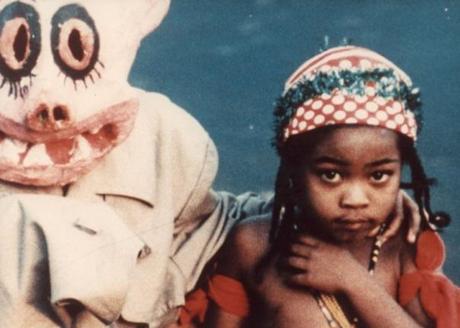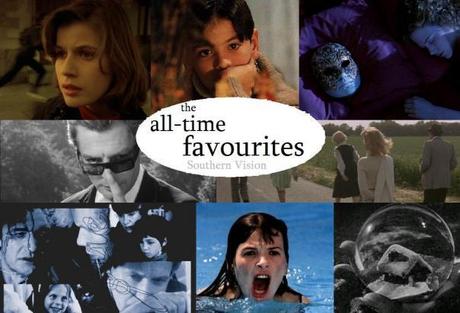
Note: By pure coincidence, this next All-Time Favourites post coincides with the recent, tragic death of Chris Marker on his 91st birthday. The review you’re about to read is dedicated to him. He was one of the most incredible minds of cinematic history, and he will be missed. Gone, but never forgotten. Though we’ve lost the Cat, we still have the Grin.
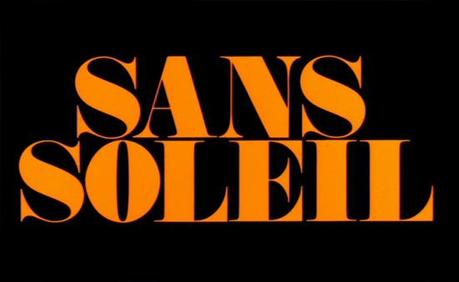
“The first image he told me about was of three children on a road in Iceland, in 1965. He said that for him it was the image of happiness and also that he had tried several times to link it to other images, but it never worked. He wrote me: one day I’ll have to put it all alone at the beginning of a film with a long piece of black lead-in; if they don’t see happiness in the picture, at least they’ll see the black.”
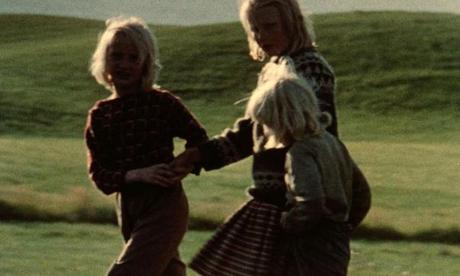
Chris Marker’s Sans Soleil (English title: Sunless, or Without Sun) is a labyrinth filled with beauty and wonder that begins with the title, and expands within every frame of the film. It is a masterpiece – not a whole lot of films deserve that description, but having just rewatched this days after Marker’s death, I can assure you Sans Soleil deserves that subtitle, if any film does. An artistic work with near-constant dialog that might not be enough to fill a novel, but certainly speaks more than most novels are capable of. These are the words of Chris Marker, and they are drenched in wonder.
Marker has 52 directorial credits on IMDb, yet so many of his movies are difficult to find, unavailable in English or even lost. Some are intriguing shorts (La Jetée), others epic documentaries (Grin Without a Cat) – but in the middle are strange essay films like this one, that can’t really be assigned to one single genre, and are perceived by many as boring and difficult to watch. I concede that the first time I saw Sans Soleil I felt I had missed something. The second time I watched it, it was like that something finally clicked into place. I adored it immediately. I’ve struggled every time I’ve tried to write something of it, because it is such a complex film with many facets. To try and explain them is pointless; many of them seem, on screen, to explain themselves. The complexity is not all that complex; an attentive audience will enjoy the film’s many details, and every person will pick up something different from them.
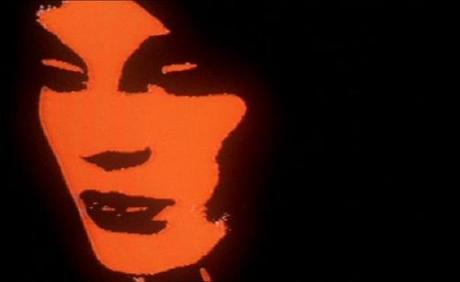
Though I haven’t tried either of these methods, Sans Soleil is apparently acceptable to watch without sound and with visuals, or without visuals and with sound. The soundtrack complements the visuals and tells their story, yet both tracks seem as though they could stand equally well on their own. There are various versions of this film with soundtracks in English, French and other languages, but the English-language one is the most popular and the narration by Florence Delay is soft and descriptive but also blunt and serious. “He wrote me…”
The images in this film were shot by Marker, just as the dialog was written under the pseudonym Sandor Krasna. With this incredible combination of the two defining factors of cinema – image and sound – Marker proves his firm status as a legend. Few directors put so much work and thought into their movies; Marker also edited, composed the score, and created the special effects for this film, often under a false name such as Krasna or Hayao Yamaneko. The narrator refers to ‘Hayao’ as the writer of the letters read out throughout the movie, though the letter writer is conflictingly credited as Krasna. This is a dead giveaway – if there weren’t already one – that their true author was Marker, who has such a way with words his complex sentences and explanations are simultaneously thought-provoking and revelatory in such a definitive moment-of-clarity way.
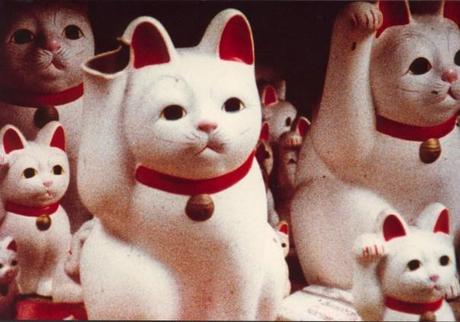
There are so many sequences in this movie that stand alone as pure brilliance that to string them together in such a neat, clean way is even more stunning. Some images are shocking: a gallery of phallic sculptures, images of animals making love, and an infamous shot of a giraffe being butchered by poachers. Others are mind-bending: images of televisions in synchronization, startling electronics and video games, and other miscellany. Toward the film’s end Marker introduces a new technique of warping the film’s image into new colours and shapes that is startling and somewhat disturbing. The subtle shift in tone in the last 30 minutes becomes obvious as images of raging fires and desperate prayer are shown on screen, the image distorting and the soundtrack echoing, chaos overcoming normality.
At some points, particularly early on in the film, Marker freezes the image on one moment, one perfect image that sums up a feeling or emotion about what is being conveyed. It is often the image of a person’s face, sometimes staring directly into the camera. One of the movie’s most distinctive and well-known images is that of a market woman who knows Marker is filming her and desperately avoids looking at him. However for one 24th of a second she stares directly into the camera and smiles, and Marker freezes on it. He adores the human face, and it is in moments like these that we see with him the beauty of expression. A quote from earlier on in the film comes to memory: “Frankly, have you ever heard of anything stupider than to say to people as they teach in film schools, not to look at the camera?”
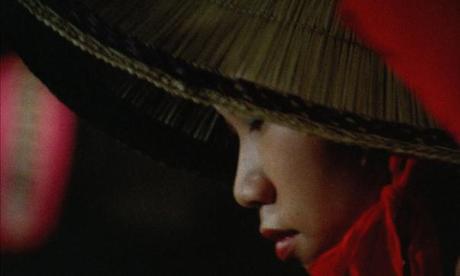
There is one image early in the film that’s quick and easy to miss. It is an image of a Japanese woman in a parade moving her hands about to the sound of bells. Marker starts with a closeup of her face, tracks out slowly, then tracks back in again, to a degree of closeness and extensive zoom that becomes disturbing. Then the shot is over as quickly as it begun. No fuss is made of it. But it’s one of the ones that will stay with me. There are other equally startling ones, such as the image of broken dolls being burned in public, and how Marker notices the expression on the faces of those standing by. He compares their expressions to those of the people who saw off the kamikaze pilots; could there be a more beautiful, haunting comparison?
Many of these images are underlined by an electronic, unnerving score composed by Marker. It creeps evilly in the background of some images, adding a veil of menace not always needed but never pointless. It is one of the many layers Marker carefully pieces together atop each other, building effect to an astonishing high. There are times when Marker’s score fades out and we are left with the sounds of real life, or in one stunning scene, a woman’s operatic voice, as in an unforgettable shot shadows are cast over Marker’s own editing station and the film’s famous San Francisco sequence highlighting Marker’s obsession with Hitchcock’s Vertigo begins.

Sans Soleil is a film I can return to for its many charms and enigmas. Its opening minute is one of the most fantastic in the entire film, instantly gripping, as we are told about an image Marker believes represents happiness: that of three children on a road in Iceland, together in a moment of unity too brief and divided by a nasty gust of wind. The narrator tells us Marker’s belief that if the audience can’t see the happiness in this image, they’d be better off staring at a black screen. I agree completely. It is a perfect image.
How to conclude this review, in which I’ve really let myself run off in glee and appreciation for the image? With a quote, perhaps? Well, what else would be better? Sans Soleil is a film which uses words to describe itself but can’t be described in mere words. It is a creation of Marker, of the eighties, of the world, of each continent and of every facial expression. A creation of each person, each glance, each moment of clarity, each film frame, each desperate evoking of cinema to capture facets of life often ignored and not appreciated for their beauty. Sans Soleil is the triumph of an auteur who is well-travelled and understands the world better than most people. He rarely showed his face on camera throughout his entire career but all his soul and heart are in every frame of all his creations, a burning wave energy escaping and flowing wonderfully through the screen. I struggled to think of the quote with which to close this review, but here’s one that sums the film’s philosophy up marvellously and is as good a place as any to end this unsubtle rave:
“I’m writing you all this from another world, a world of appearances. In a way the two worlds communicate with each other. Memory is to one what history is to the other: an impossibility.”
